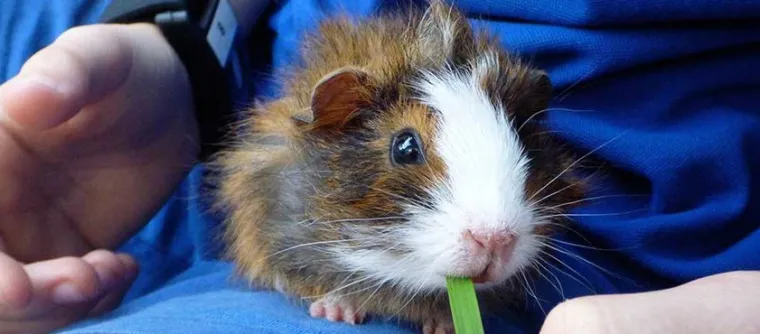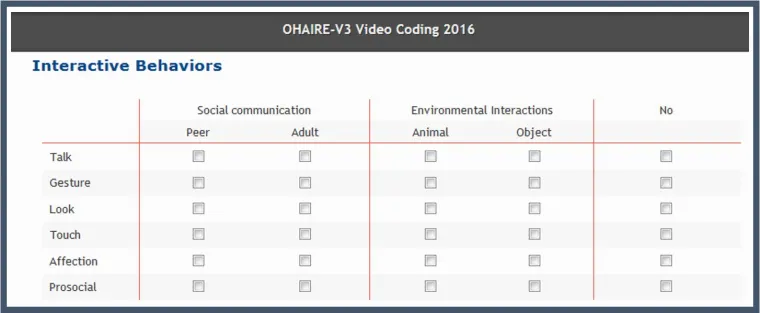The OHAIRE Coding System
Designed to evaluate human social behavior in naturalistic settings that may or may not include animals
The OHAIRE uses interval behavior coding (also known as one-zero sampling) to capture emotional displays, interactive behaviors, including social communication and environmental interactions, and interfering behaviors.
About The Coding System
The Observation of Human-Animal Interaction for Research (OHAIRE) is a timed interval coding system intended to capture the unique interactions between humans and animals. It was initially developed and piloted with children with autism spectrum disorder (ASD) interacting with typically-developing peers in a small group school setting with guinea pigs compared to toys (O’Haire et al., 2013). The OHAIRE Version 3 (OHAIRE-V3) was expanded and updated from its original version to enhance the accuracy and efficiency of administration (Guérin et al., 2018).
Participants & Animals
The OHAIRE was specifically created for use in research with participants aged 4 to 16 years, but may also be suitable for individuals of other ages, provided appropriate validity and reliability analyses are conducted. Participants must be with (at least) one other person during video sessions to allow for the coding of social behaviors.
The coding system has been used to code interactions with dogs and guinea pigs and social behaviors before and after interactions with horses. The coded behaviors are general enough to be assumed to apply to other domesticated animal species. It can be used for videos both with and without an animal present. This enables blinded coding of interactions before and after the presence of an animal.

Captured Behaviors
The OHAIRE captures naturalistic behavior during unstructured interaction opportunities. The coding system captures emotional displays, interactive behaviors, social communication and environmental interactions, and interfering behaviors.
Online System
The OHAIRE uses an online coding system through the Qualtrics survey platform to reduce the time and error associated with paper-based data entry. Currently, SPSS syntax for the coding system is written for Qualtrics data export. In the future, we aim to develop syntax that will accommodate other online data entry tools.

Reliability
The latest version, OHAIRE-V3, has excellent inter-rater reliability when coders are trained by the original trainer (primary) or a subsequent trainer (secondary). It yields high inter-rater reliability in populations with ASD (mean k = 0.85) and typical development (mean k = 0.83), where levels above 0.75 are considered excellent.
Online Training
We are excited to announce that we have partnered with OpenLearning to launch an online training course for the OHAIRE.
We look forward to working with you to ensure that you receive the best possible training and support as you capture ecologically valid data regarding the interactions of humans and animals!
- O'Haire, M. E., McKenzie, S. J., Beck, A. M., & Slaughter, V. (2013). Social behaviors increase in children with autism in the presence of animals compared to toys. PLoS ONE, 8(2), https://doi.org/10.1371/journal.pone.0057010.
- Guérin, N. A., Gabriels, R. L., Germone, M. M., Schuck, S. E., Traynor, A., Thomas, K. M., McKenzie S. J., Slaughter, V. & O'Haire, M. E. (2018). Reliability and validity assessment of the Observation of Human-Animal Interaction for Research (OHAIRE) behavior coding tool. Frontiers in Veterinary Science, 5, https://doi.org/10.3389/fvets.2018.00268.
- Germone, M. M., Gabriels, R. L., Guérin, N. A., Pan, Z., Banks, T., & O’Haire, M. E. (2019). Animal-assisted activity improves social behaviors in psychiatrically hospitalized youth with autism. Autism, https://doi.org/10.1177/1362361319827411.
